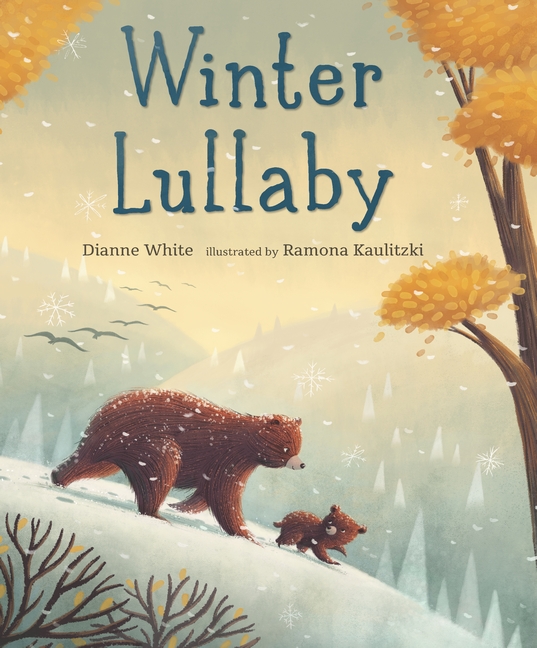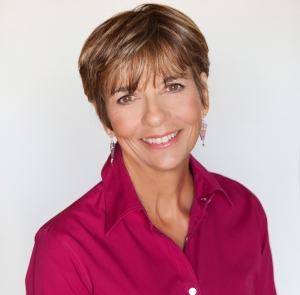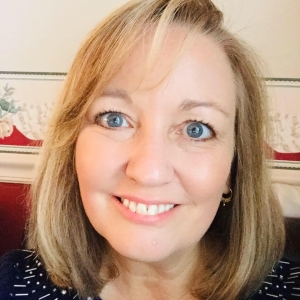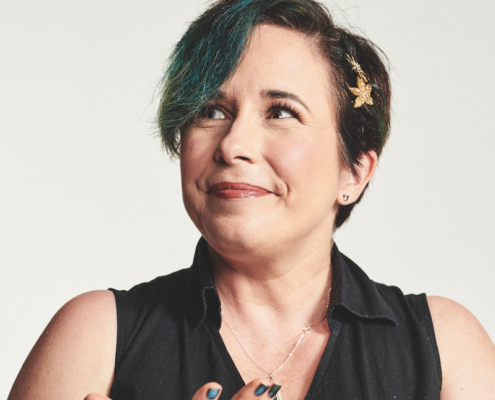Release Interview: WINTER LULLABY by Dianne White ’07
Laurel Abell: Tell us about your book.
Dianne White: I can’t remember when I wrote the very first draft of WINTER LULLABY, but it was many years ago. Looking back through the binders I kept during my time at VCFA, there’s a version of the story in the 5th packet of my first semester with Phyllis Root.
That was – *cough, cough* – way back in 2005. Which, I suppose means that this was a story idea that I always thought had merit, but that needed a looooong hibernation. Ha!
LA: Where did the inspiration for writing this book come from?
DW: I taught elementary school (mostly primary grades) for 25 years and over those many years, I read thousands of picture books. Winter and animals that hibernate was a favorite theme in first grade and I was inspired by books like Denise Fleming’s TIME TO SLEEP. Kids loved that book and I loved that it was a “going-to-bed” book that featured animals getting ready as winter approached.
That became my goal – to write a lullaby that was about the coming of winter and a small bear who was reluctant to go to sleep.
LA: Were there any unexpected hiccups along the way?
DW: Umm … Yes! Even though the manuscript received positive feedback from editors, it didn’t sell. Which means that it went back in the virtual drawer for the right time and the right revision. That time arrived years later when my agent’s first child was in the “lullaby stage.” Her feedback pushed the manuscript, particularly the ending, to the next level. Finally, the “more” that the story had been lacking found its way to an ending that resonated.
LA: What “darlings” had to be disposed of? Were there lines or words that felt so right to you but in the end didn’t work as you wished? How did making those crucial choices change the poem or story arc?
DW: There’s surprisingly a lot from the early versions that remained in the published version. A few of the animals changed, but the general wording, structure, and story line remained the same.
One of the problems I wrestle with when working in rhyme is what I think of as the “ruts in the road.” In no time at all, words and rhythms get stuck in my head. Then, it’s a matter of tricking myself to reimagine the troublesome lines. That’s when I start free-writing. Asking myself questions: What do I want to say in this section? What are other ways to say it? It’s a process.
For this manuscript, it was a critique partner who pointed me to a revision question she’d found on Kate Messner’s blog – “If your work-in-progress could talk back to you right now, what would it say?”
That’s when I had Small Bear write me a letter in that brainstormy, free-writing way I like to use when exploring my ideas. Before long, the rhythms, words, and patterns from the familiar version fell by the wayside and new words emerged. It was the breakthrough I needed to finalize the ending.
The meter is basically/mostly trochaic tetrameter, very much like William Blake’s “The Tyger” and with a similar rhyme scheme. Did you use his poem or others with similar structures as mentor texts?
Wow! I love the comparison to “The Tyger.” Certainly, many years of reading picture books and poetry have made their way into my bones. But the truth is that, no, the meter and rhyme scheme were not inspired by the poem. In fact, I don’t remember much about the initial development of this text because the earliest version saved on my computer is from over 15 years ago!
My best guess, though, is that the first lines “dropped” into my head – the voice of Mama beginning the conversation, her Small Bear needing to ask, “But why?”
Tell us a little bit about your background before VCFA, and how you came to decide to enter our program.
I had been writing for several years, taking classes, and going to conferences, all while working full-time and VCFA felt like the most natural next step. It was a step of faith, actually. How would I fit in all the packets while also working long days in the classroom? It served as the push I needed, the stake I planted in the ground. Writing and publishing books for kids was more than just a dream. It was something I felt compelled to do, and I knew I would need all the tools. VCFA gave me those tools.
Could you talk about your experience in lectures or during your semester work with advisors and how it may have shaped the writing life you are living now?
After graduation in 2007, I returned to Vermont College to enroll in the very first Picture Book Certificate Program semester with Kathi Appelt. I’d been reading her books in my classroom for years but didn’t have the opportunity to work with her during the regular program. This was my chance! It was Kathi who encouraged me to try something “without dialogue.” I sat down to write a poem about the rain, and that manuscript ended up being my first sale, BLUE on BLUE, illustrated by Beth Krommes.
Do you have any VCFA connections that affect your career right now?
The VCFA community and the friends I made while I was a student there are a constant source of inspiration to this day. I am very close to a number of my Whirligig (Winter 2007) classmates. It’s been nearly 15 years since graduation, and we still email almost weekly. We live all over the country but make a point to get together once a year.
What’s forthcoming for you and your writing life?
In 2022, my next book, LOOK and LISTEN: Who’s in the Garden, Meadow, Brook?, illustrated by Amy Schimler-Safford comes out from Holiday House/Ferguson Books.
Several more picture books are under contract and will be out in 2023 and 2024.
What indie bookstore do you want WCYA to support in the purchase of your book?
Changing Hands has two stores in the Phoenix metro area and they’re great supporters of Arizona authors. If you a order book, let them know and I’m happy to personalize it!
We are heeding the Brown Bookshelf’s call to action and raising up BIPOC authors. In the vein of “if you like my book, you may also like this book,” what is the name of a book by a BIPOC author that you recommend or are interested in supporting?
I adore Nikki Grimes’ BEDTIME FOR SWEET CREATURES, illustrated by Elizabeth Zunon.
WINTER LULLABY by Dianne White and illustrated by Ramona Kaulitzki is published by Candlewick, November 9, 2021.
Dianne White is the award-winning author of numerous children’s picture books, including Blue on Blue, and Green on Green. Forthcoming books include Winter Lullaby, illustrated by Ramona Kaulitzki (Candlewick Press, Nov. 9, 2021) and Look and Listen: Who’s in the Garden, Meadow, Brook?, illustrated by Amy Schimler-Safford (Holiday House/Ferguson Books, 2022).
As a teacher who was privileged to share her love of books and poetry with many students over many years, she is now delighted to be writing full time from her home in sunshiny Arizona. Visit her at diannewrites.com and on Instagram & Twitter: @diannewrites.








